Recognizing when to visit the emergency room can make a difference between life and death. Some people go to the ER for insignificant issues, and others wait too long when they actually need assistance. Both are unsafe.
The solution is knowing what constitutes an actual emergency. “ER visit” The ER is designed for conditions that would be lethal without delay. When a sudden illness or accident strikes, it’s important to know when to go to the emergency room for immediate care. Once you know what to expect, you can act quickly, don’t panic, and make the best decision for yourself or your loved ones.Knowing when to go to the “When to Visit the ER: Signs You Need Emergency Care”can help you make life-saving decisions during medical emergencies.
Why It Matters to Know When to Go

Many people visit the ER when they don’t need to. This leads to long waits and delays for real emergencies. According to the CDC, about 40% of ER visits are non-urgent. That means someone with chest pain may wait longer because of others with minor issues. Understanding when to go to the emergency room helps reduce stress on hospitals and keeps care available for those in danger.
Quick action also improves recovery chances. A heart attack or stroke treated early can prevent lasting damage. Recognizing signs and acting fast can truly save lives.
TOU WILL LIKE: https://doctorambulance.com/what-is-an-emergency-action-plan-a-complete-guide/
What Counts as a Real Emergency
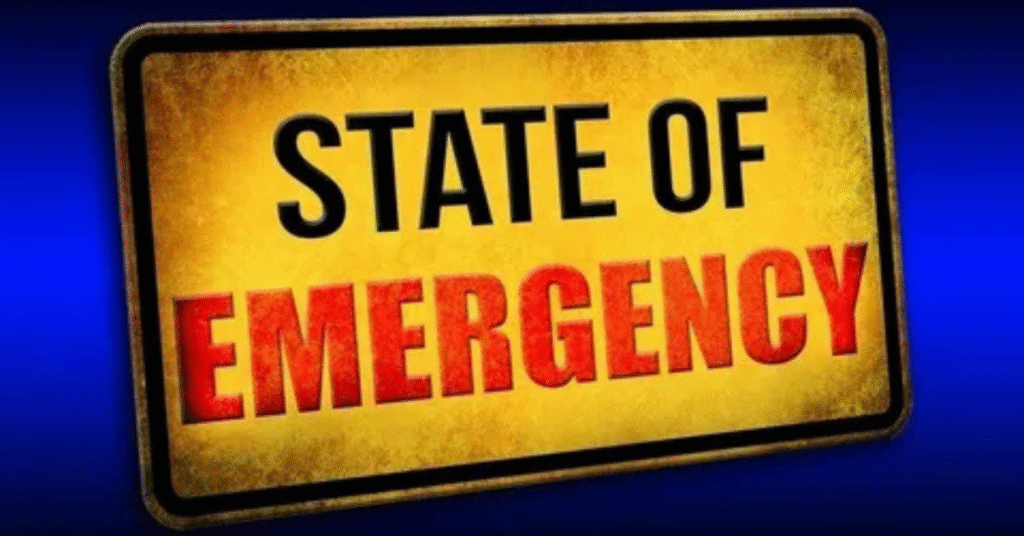
A medical emergency is when a condition threatens life, limb, or major body function. The American College of Emergency Physicians (ACEP) defines it as any symptom severe enough that a delay in care could cause serious harm.
Here are examples that need ER care: severe chest pain, shortness of breath, fainting, heavy bleeding, or sudden confusion. When to visit the ER” A person having a seizure, severe burn, or head injury also needs emergency help.
| Emergency Condition | Why It’s Serious |
| Chest pain or pressure | May indicate a heart attack |
| Sudden weakness or numbness | Possible stroke |
| Difficulty breathing | Could signal asthma or lung issues |
| Uncontrolled bleeding | Risk of shock |
| Major injury or accident | Internal damage possible |
Signs You Should Go to the Emergency Room
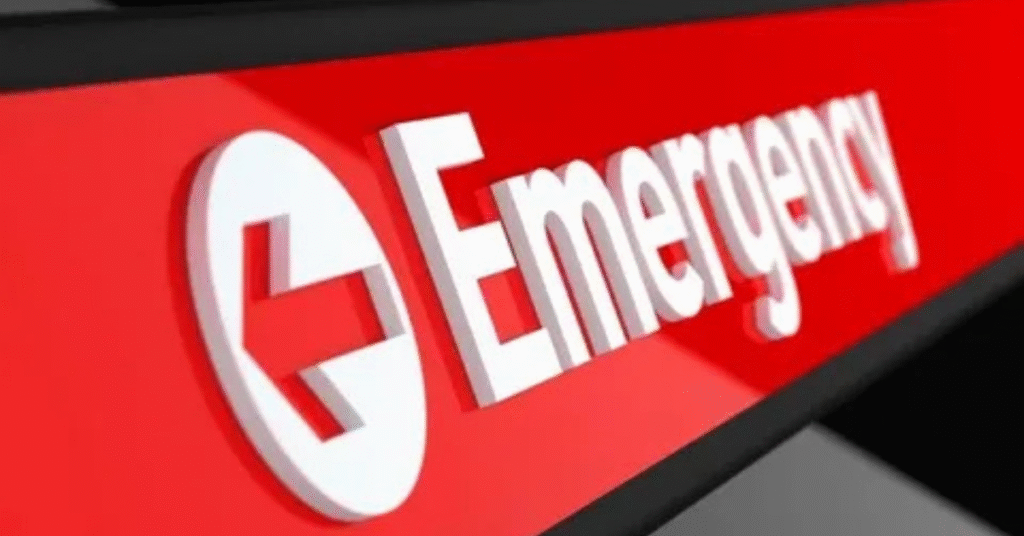
You should always choose the ER for symptoms that are sudden, severe, or unusual. Chest pain, trouble breathing, and severe abdominal pain are clear red flags. A high fever that doesn’t go down, heavy bleeding, or broken bones with visible deformity need immediate attention.
In children, warning signs include trouble breathing, nonstop crying, or dehydration. Pregnant women should seek emergency care for heavy bleeding, severe pain, or decreased fetal movement. Mental health emergencies, like suicidal thoughts or violent behavior, also require the ER. It’s always better to go and be safe than to wait and regret later.
When Not to Go to the Emergency Room
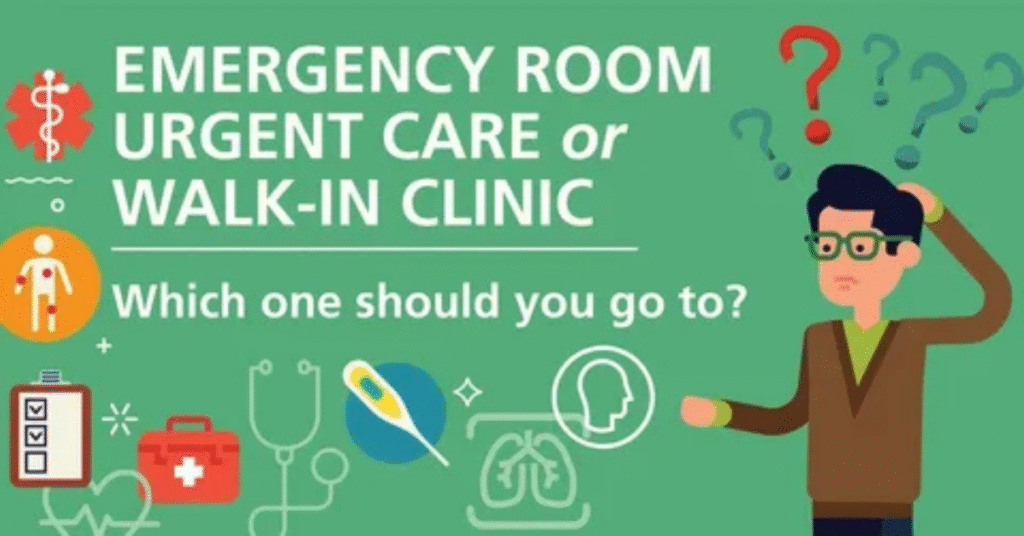
Not every illness needs emergency treatment. Many problems, like mild colds, sore throats, ear pain, or prescription refills, can be treated by your family doctor or an urgent care center. Going to the ER for such cases can result in higher bills and long waits.
According to studies, the average ER wait time in the US is about 150 minutes, and costs can exceed $1,000 for simple conditions. Using the right care level saves time, money, and resources for those who need them most.
Urgent Care vs. Emergency Room
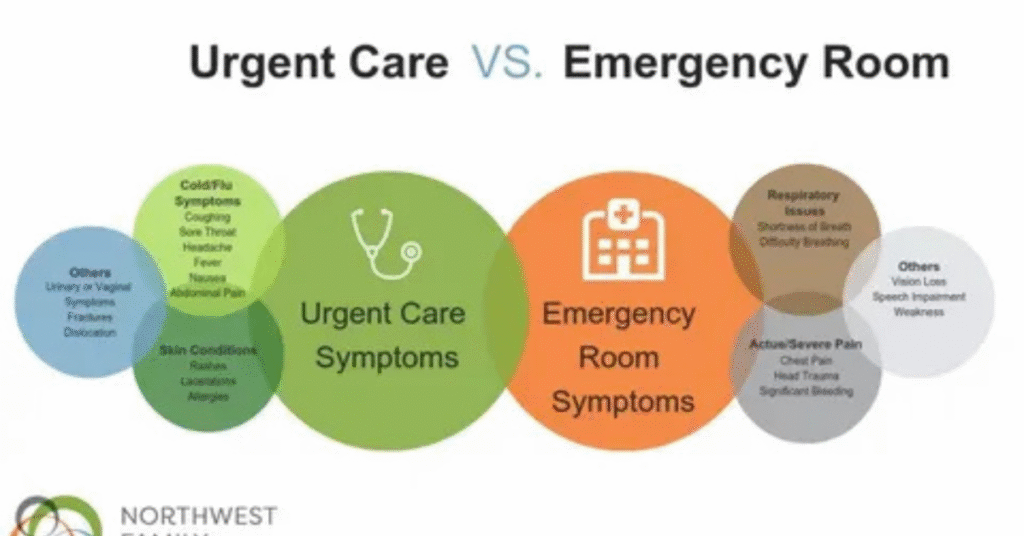
Sometimes, you may not be sure which one to choose. Urgent care centers are designed for illnesses that need quick attention but aren’t life-threatening. The ER handles serious and complex problems.
| Comparison | Urgent Care | Emergency Room |
| Hours | Extended but not 24/7 | Open 24/7 |
| Cost | Lower | Higher |
| Wait Time | Shorter | Longer |
| Staff | General physicians | Specialists available |
| Examples | Minor injuries, infections | Heart attack, stroke, trauma |
If you’re unsure, you can call your doctor’s office or nurse helpline before heading out. They can guide you to the right place.
What to Do Before Going to the ER

If you think it’s an emergency, stay calm and act fast. Call 911 instead of driving yourself if the person’s condition is critical. Paramedics can start treatment right away. Bring identification, insurance card, and a list of medications if you can.
If you’re helping someone, try to keep them comfortable. For bleeding, apply pressure with a clean cloth. For someone fainting, keep them lying flat. Never give food or drink to someone unconscious or vomiting. These small steps can make a big difference before professional help arrives.
What to Expect at the Emergency Room
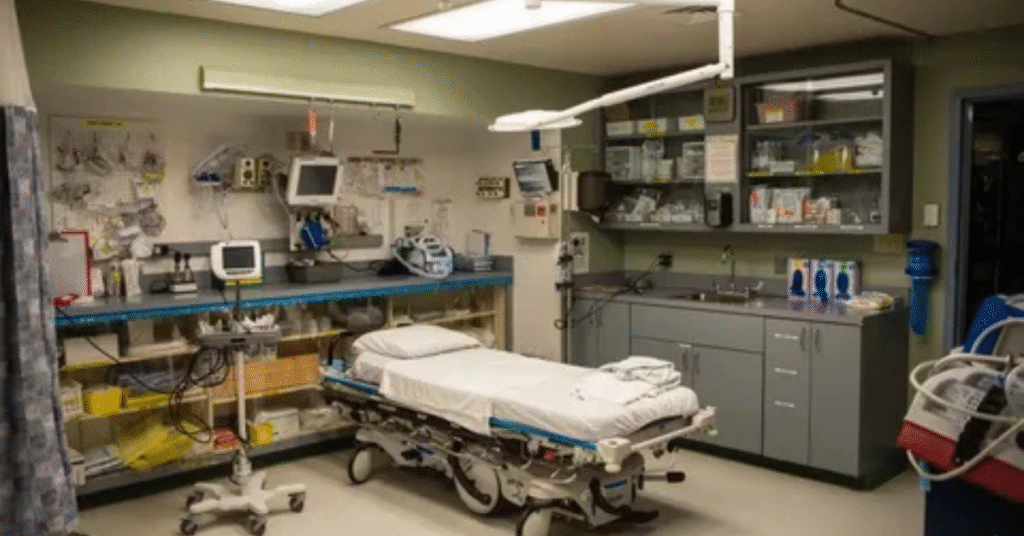
Once you reach the ER, you’ll go through triage. A nurse checks your symptoms and decides how urgent your case is. This system ensures that the sickest patients are treated first, not just the first in line.
You may wait even if others who came later go in first. Don’t panic; it’s based on medical need. After triage, tests, scans, and treatments are done as needed. “Emergency department” Staff might ask about your medical history, allergies, and medications. Clear communication helps doctors treat you faster.
Costs and Insurance Facts

ER care is expensive because it includes specialized staff and equipment available 24/7. The average ER visit in the US costs between $700 and $3,000, depending on the issue. Insurance may cover emergencies differently, so always check your policy.
| Type of Visit | Average Cost (USD) | Covered by Insurance? |
| ER visit (minor issue) | $700–$1,500 | Sometimes |
| Serious emergency | $2,000–$3,000+ | Usually yes |
| Urgent care | $100–$250 | Often yes |
If you don’t have insurance, ask about hospital financial aid programs. Some hospitals reduce or forgive bills based on income.If you have chest pain or trouble breathing, that’s a clear sign to go to the emergency room immediately.
How to Prevent Unnecessary ER Visits

You can avoid unnecessary ER trips by taking care of your health daily. Schedule regular checkups and manage chronic diseases like diabetes or asthma with your doctor. Keep a basic first-aid kit at home with bandages, fever reducers, and allergy medicine.
Using telehealth services is another smart choice. You can talk to a doctor online for advice, prescriptions, or lab results. Many hospitals also offer nurse hotlines for free.“When to Visit the ER for Urgent Health Problems” These small steps keep you healthy and help ERs stay open for real emergencies.
Common Mistakes People Make Before Going to the ER

Many people panic when faced with a sudden health problem. They rush to the ER without thinking. This can cause confusion and stress when you arrive. Forgetting important items like your ID, insurance card, or medication list can delay your treatment. Always take a moment to gather what you need before you leave.
Another common mistake is driving yourself when you shouldn’t. If you’re having chest pain, dizziness, or severe bleeding, call 911 instead. Paramedics can start treatment on the way and get you there safely. Quick, calm decisions can save your life.
What Happens After an ER Visit

After treatment, doctors may decide to admit you to the hospital for further care. Sometimes they’ll discharge you with medicine and follow-up instructions. Make sure you understand every part before leaving. Ask questions if anything feels unclear.
Once you’re home, rest and take your medicines as directed. Don’t skip your follow-up appointment, even if you feel better. It helps doctors track your recovery and catch any hidden problems early.
How ER Staff Handle Emergencies
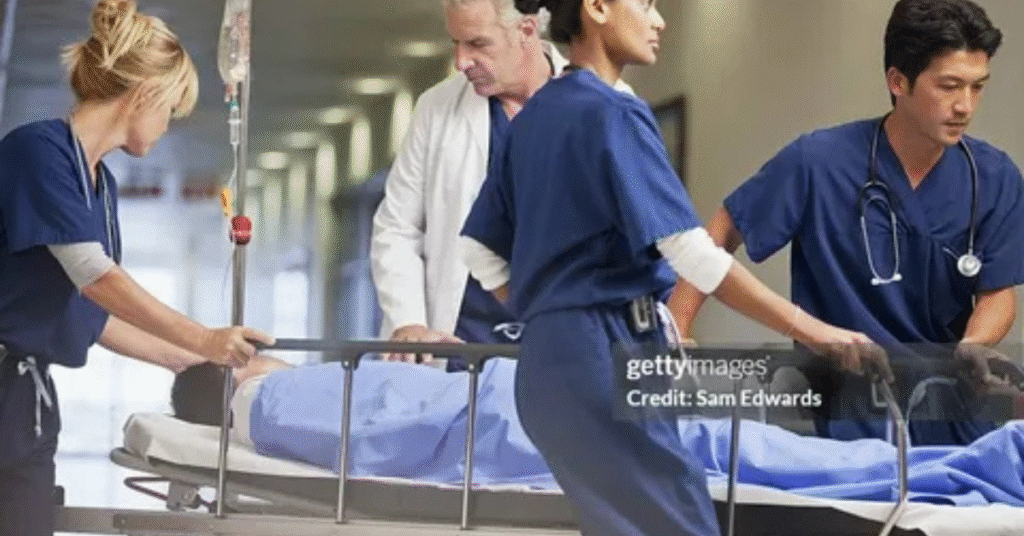
Emergency room staff work in high-stress situations every day. They quickly assess, diagnose, and treat patients under pressure. Every second matters when saving a life. You’ll meet triage nurses, doctors, lab technicians, and sometimes specialists all working as a team.
They follow a clear process: stabilize first, then diagnose and treat. For example, someone with breathing trouble will get oxygen before tests begin. This order helps prevent death or lasting damage while ensuring patients get the best care possible.
CHEAK: https://doctorambulance.com/what-is-emergency-heat-a-complete-homeowners-guide/
Myths About the Emergency Room
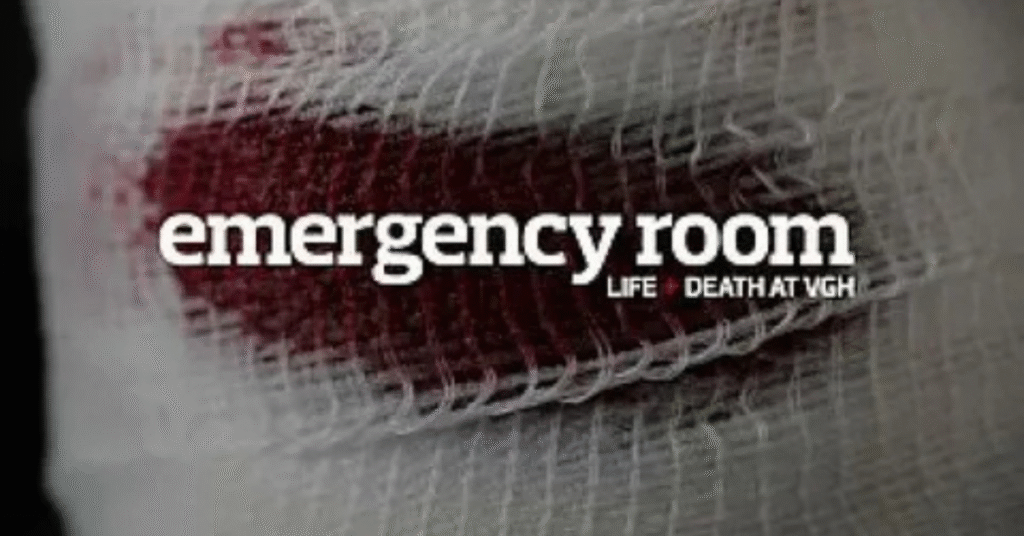
Many people believe the ER treats everyone immediately, but that’s not true. The ER uses triage, which means the sickest patients go first. Someone with a broken arm might wait if a heart attack patient comes in. Understanding this helps you stay patient and calm.
Another myth is that all ER visits are free. While hospitals must treat emergencies, you’ll still receive a bill later. Knowing your insurance coverage and available aid can prevent financial surprises.
How to Stay Prepared for Medical Emergencies
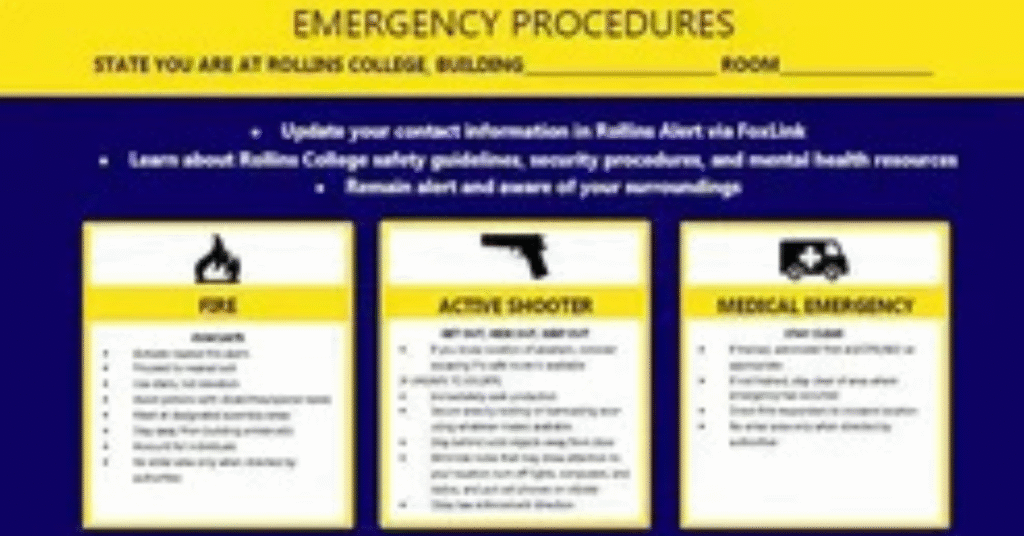
Preparation makes emergencies less scary. Keep an updated list of your medicines, allergies, and emergency contacts at home and on your phone. Store a small first-aid kit where it’s easy to find. These simple steps can save time during an emergency.
Teach your family basic first aid and how to call 911. Practice what to do if someone faints or stops breathing. Being ready doesn’t mean you expect an emergency — it means you care enough to act fast when one happens.
FAQ”s
How do I know if my chest pain needs the ER?
If your chest pain is heavy, spreads to your arm or jaw, or comes with shortness of breath or sweating, go to the ER immediately.
Can I go to urgent care for a broken bone?
You can go to urgent care for small fractures, but if the bone is visible or the pain is severe, head straight to the ER.
What if I can’t afford an ER visit?
Hospitals can’t deny treatment for emergencies. You can apply for payment plans or financial aid afterward.
How long will I wait at the ER?
It depends on your condition’s urgency. Serious cases are treated first, so minor issues may wait longer.
Can I call 911 for someone else?
Yes. If someone nearby has an emergency, call 911. Stay with them and follow the operator’s instructions until help arrives.
Conclusion
Knowing when to go to the emergency room helps you make quick, smart choices during medical crises. It ensures you or your loved ones get the right care without delay. “Go to the emergency room” Always trust your instincts, but don’t ignore warning signs.Understanding when to go to the When to Visit the ER: A CompleteLearn,Guide”ensures you get care when every second counts. When something feels wrong, seek help fast. Being prepared and informed can truly make the difference between a full recovery and lasting harm.